Abstract
Sulfate-utilizing revertants of a cysteine auxotroph of Salmonella pullorum have been found that cause an accumulation in growth medium of a sulfur compound more oxidized than sulfide. The sulfur compound was presumptively identified as sulfite by the formation of a colored complex in the presence of basic fuchsin and formaldehyde, oxidation to sulfate by peroxide, and acid-volatility. The acid-volatile material was identified as sulfite by formation of an S-sulfonyl derivative of 5,5′-dithio-bis(2-nitrobenzoic acid) which was chromatographically and electrophoretically identical to an authentic S-sulfonyl derivative. The presence of sulfate in minimal medium is required for sulfite accumulation, and both cysteine and selenate inhibit the accumulation. No evidence was obtained to indicate that a reduced sulfur compound was the precursor of the accumulated sulfite.
Full text
PDF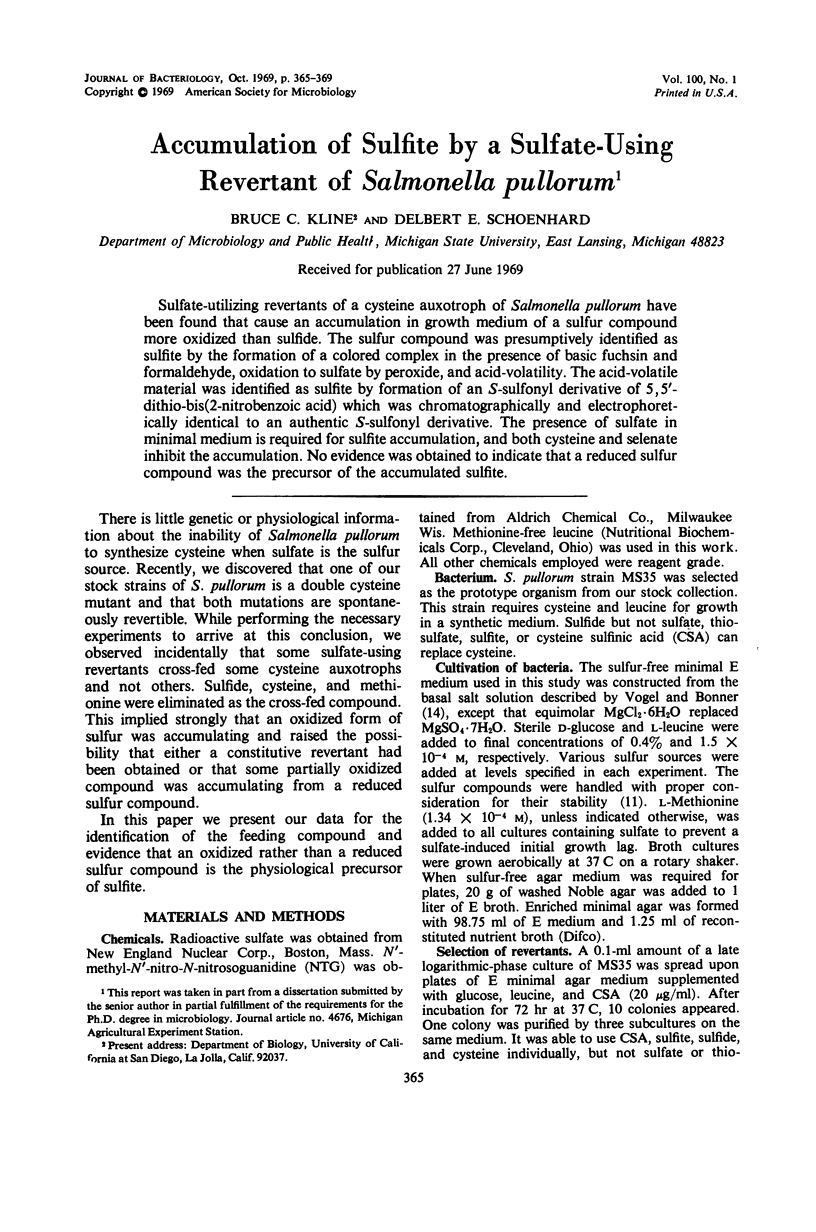
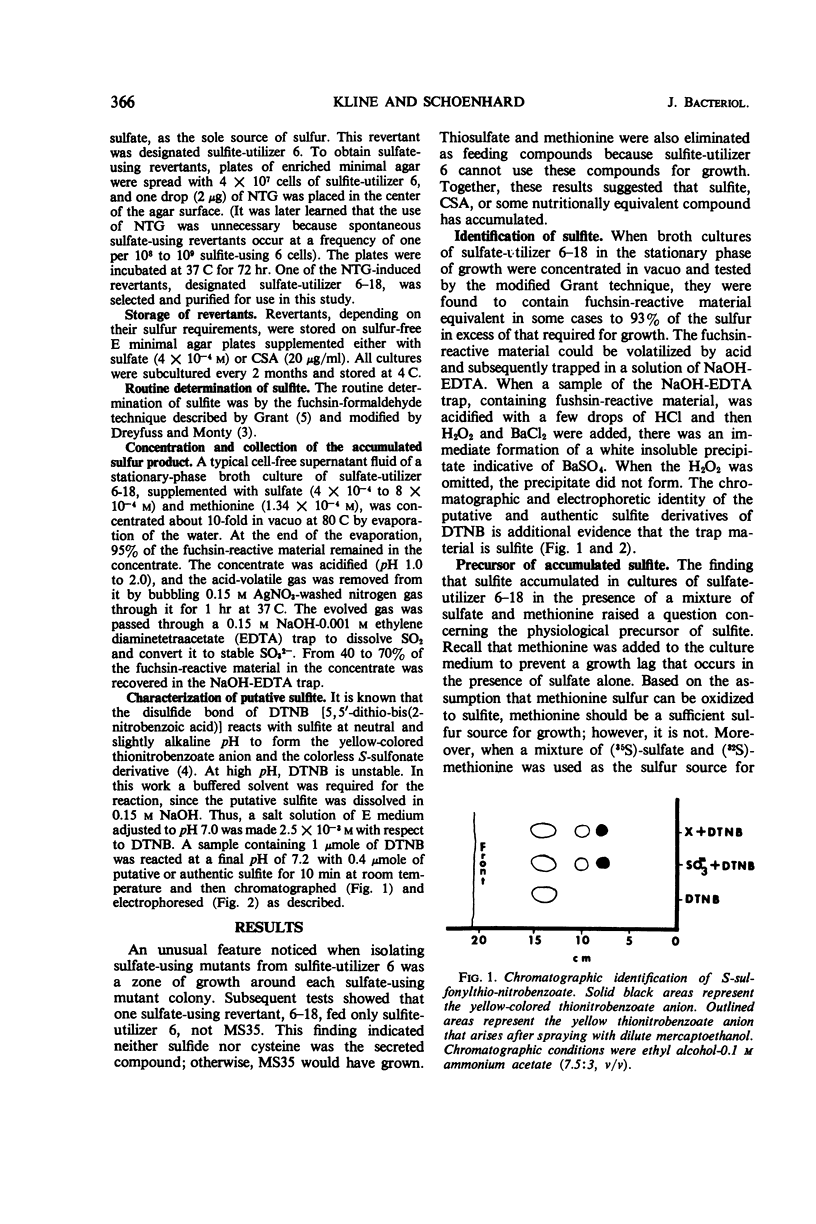
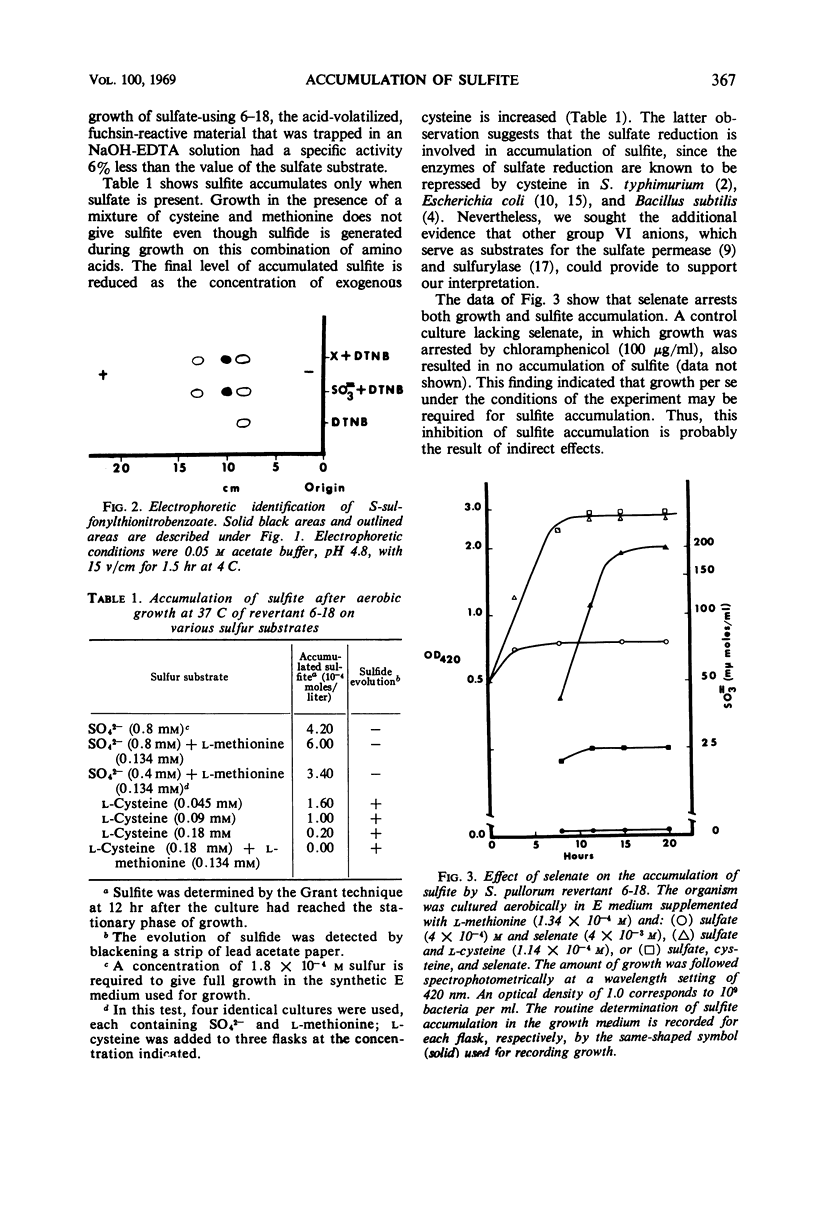
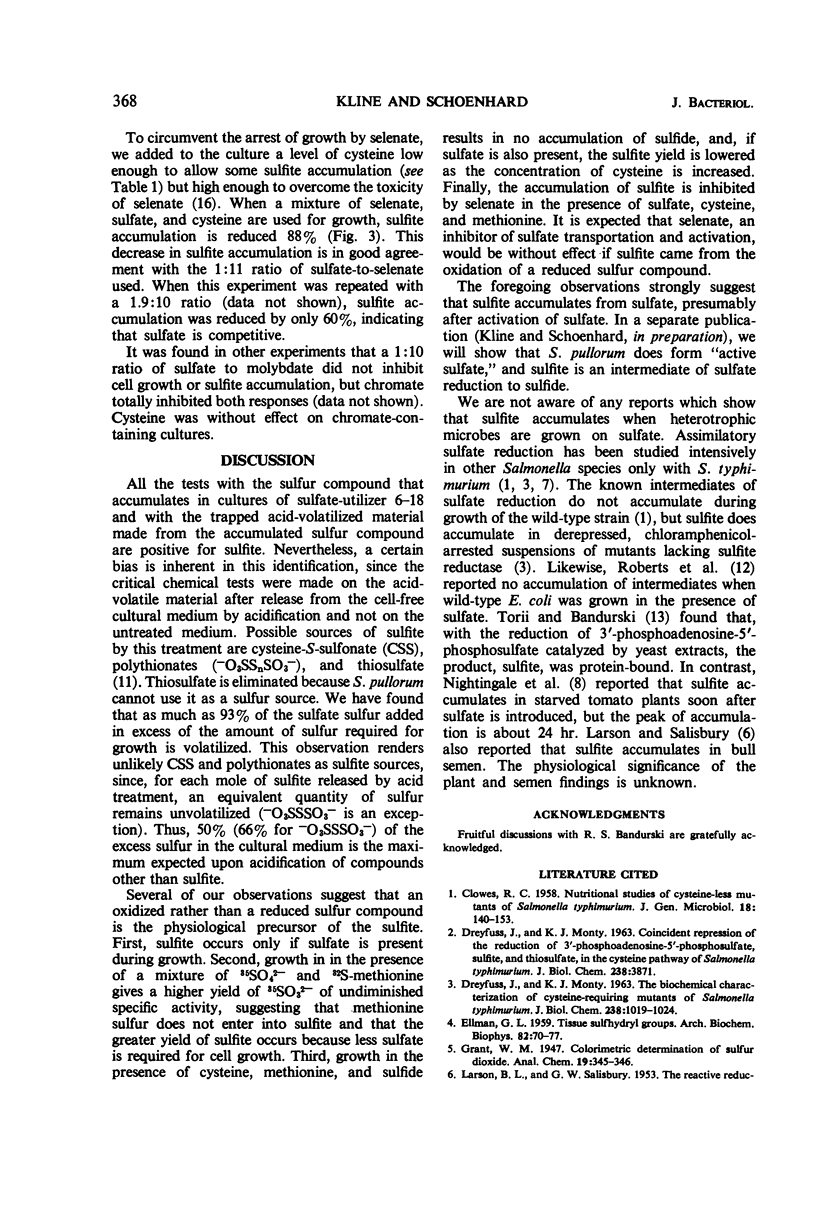
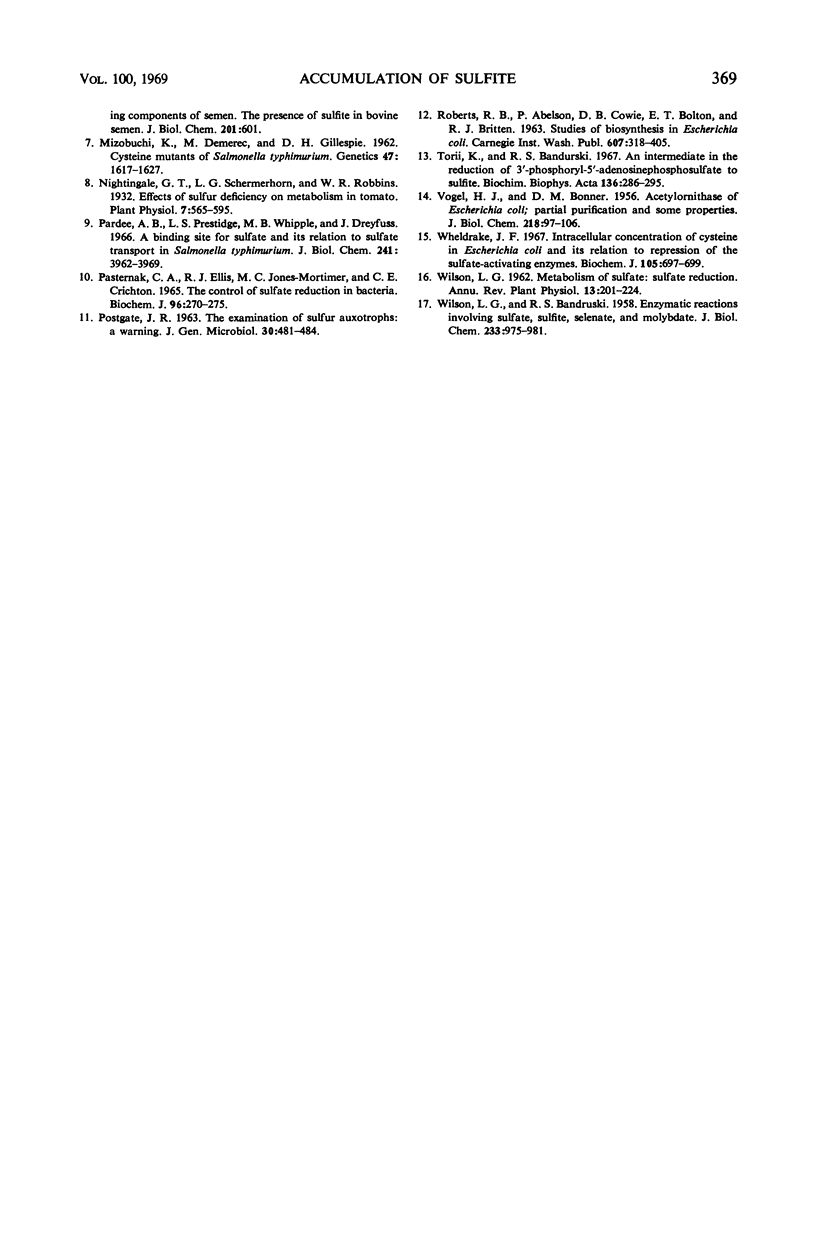
Selected References
These references are in PubMed. This may not be the complete list of references from this article.
- CLOWES R. C. Nutritional studies of cysteineless mutants of Salmonella typhimurium. J Gen Microbiol. 1958 Feb;18(1):140–153. doi: 10.1099/00221287-18-1-140. [DOI] [PubMed] [Google Scholar]
- ELLMAN G. L. Tissue sulfhydryl groups. Arch Biochem Biophys. 1959 May;82(1):70–77. doi: 10.1016/0003-9861(59)90090-6. [DOI] [PubMed] [Google Scholar]
- LARSON B. L., SALISBURY G. W. The reactive reducing components of semen; the presence of sulfite in bovine semen. J Biol Chem. 1953 Apr;201(2):601–608. [PubMed] [Google Scholar]
- Mizobuchi K, Demerec M, Gillespie D H. Cysteine Mutants of Salmonella Typhimurium. Genetics. 1962 Nov;47(11):1617–1627. doi: 10.1093/genetics/47.11.1617. [DOI] [PMC free article] [PubMed] [Google Scholar]
- Nightingale G. T., Schermerhorn L. G., Robbins W. R. EFFECTS OF SULPHUR DEFICIENCY ON METABOLISM IN TOMATO. Plant Physiol. 1932 Oct;7(4):565–595. doi: 10.1104/pp.7.4.565. [DOI] [PMC free article] [PubMed] [Google Scholar]
- PASTERNAK C. A., ELLIS R. J., JONES-MORTIMER M. C., CRICHTON C. E. THE CONTROL OF SULPHATE REDUCTION IN BACTERIA. Biochem J. 1965 Jul;96:270–275. doi: 10.1042/bj0960270. [DOI] [PMC free article] [PubMed] [Google Scholar]
- POSTGATE J. R. The examination of sulphur auxotrophs: a warning. J Gen Microbiol. 1963 Mar;30:481–484. doi: 10.1099/00221287-30-3-481. [DOI] [PubMed] [Google Scholar]
- Pardee A. B., Prestidge L. S., Whipple M. B., Dreyfuss J. A binding site for sulfate and its relation to sulfate transport into Salmonella typhimurium. J Biol Chem. 1966 Sep 10;241(17):3962–3969. [PubMed] [Google Scholar]
- Torii K., Bandurski R. S. Yeast sulfate-reducing system. 3. An intermediate in the reduction of 3'-phosphoryl-5'-adenosinephosphosulfate to sulfite. Biochim Biophys Acta. 1967 Mar 22;136(2):286–295. doi: 10.1016/0304-4165(67)90074-8. [DOI] [PubMed] [Google Scholar]
- VOGEL H. J., BONNER D. M. Acetylornithinase of Escherichia coli: partial purification and some properties. J Biol Chem. 1956 Jan;218(1):97–106. [PubMed] [Google Scholar]
- WILSON L. G., BANDURSKI R. S. Enzymatic reactions involving sulfate, sulfite, selenate, and molybdate. J Biol Chem. 1958 Oct;233(4):975–981. [PubMed] [Google Scholar]
- Wheldrake J. F. Intracellular concentration of cysteine in Escherichia coli and its relation to repression of the sulphate-activating enzymes. Biochem J. 1967 Nov;105(2):697–699. doi: 10.1042/bj1050697. [DOI] [PMC free article] [PubMed] [Google Scholar]


